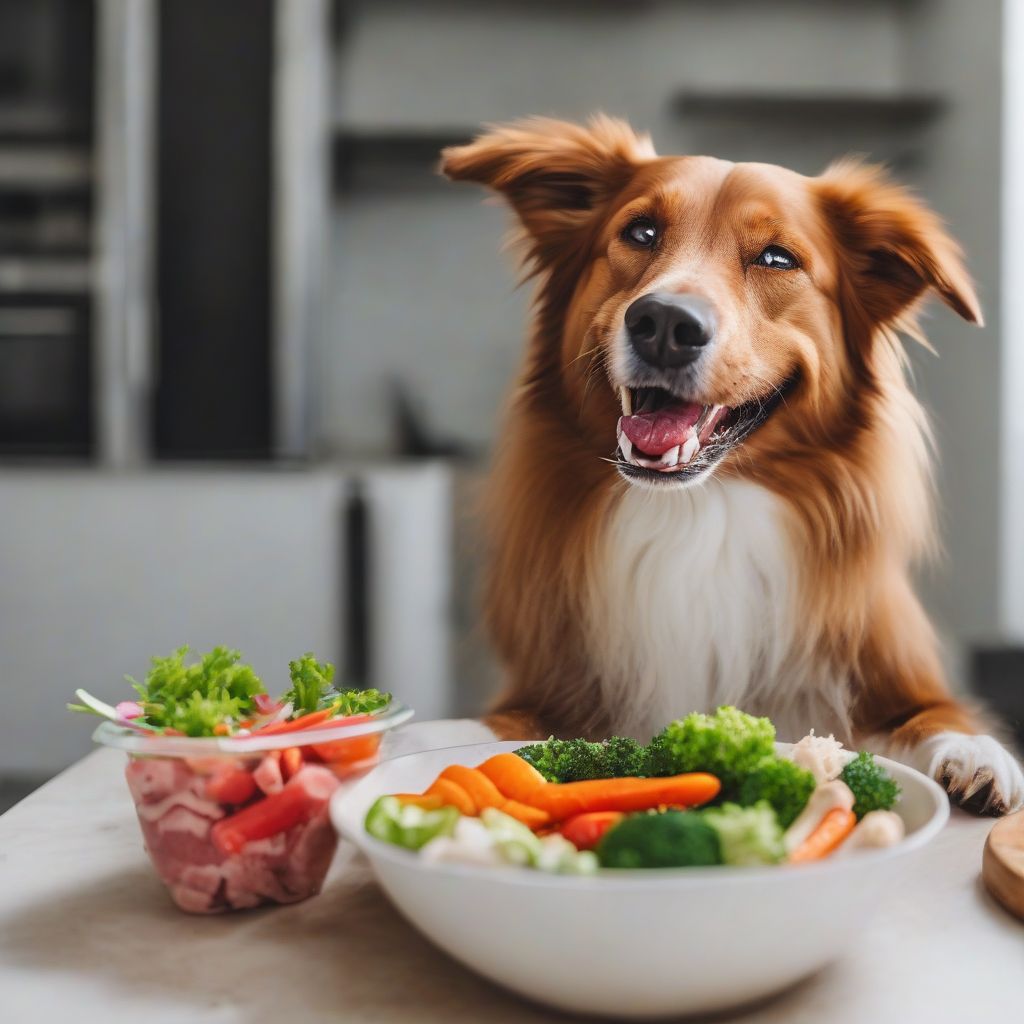Have you ever wondered if the food in your pet’s bowl is truly mirroring their ancestral diet? The glossy kibble and neatly packaged wet food are a far cry from the prey a wild dog or cat would consume. This leads many pet owners to explore the potential benefits of raw food diets for their furry companions. Let’s delve into the world of raw feeding, examining the advantages, risks, and everything you need to know to make an informed decision for your pet.
What are the Benefits of Raw Food Diets for Pets?
Raw food diets, also known as BARF (Biologically Appropriate Raw Food or Bones and Raw Food), typically consist of uncooked muscle meat, bones, organs, fruits, and vegetables. Proponents argue that these diets more closely resemble the natural diet of carnivores and can offer several potential benefits.
Improved Digestion and Nutrient Absorption
Advocates of raw food diets claim that raw food is more digestible for pets, leading to better nutrient absorption. They suggest that cooking destroys enzymes naturally present in food, making it harder for pets to break down and utilize nutrients. However, scientific studies have not definitively confirmed these claims.
Shinier Coat and Healthier Skin
Many pet owners report observing a noticeable improvement in their pet’s coat and skin after switching to a raw food diet. They attribute this to the higher concentration of essential fatty acids and other nutrients found in raw ingredients. “I saw a dramatic improvement in my dog’s flaky skin after just a few weeks on a raw diet,” recounts a pet owner from a popular online forum.
Increased Energy Levels and Vitality
Some pet owners believe that raw food diets contribute to increased energy levels and overall vitality in their pets. They suggest that the natural nutrients and lack of processed ingredients provide a more bioavailable source of energy.
Better Dental Health
Chewing on raw bones can have a natural teeth-cleaning effect, potentially reducing plaque and tartar buildup. However, it’s crucial to select appropriately sized bones to prevent choking hazards or tooth fractures.
Weight Management
Raw food diets, when properly balanced, can be effective for weight management in pets. The higher protein content can help promote satiety and lean muscle mass.
Potential Risks and Considerations of Raw Food Diets
While raw food diets offer potential benefits, it’s essential to be aware of the associated risks.
Bacterial Contamination
Raw meat can harbor harmful bacteria like Salmonella and E. coli, posing a risk to both pets and humans. Careful handling and hygiene practices are crucial to minimize contamination.
Nutritional Deficiencies
Improperly balanced raw food diets can lead to nutritional deficiencies. Consulting with a veterinary nutritionist is highly recommended to ensure your pet receives all the necessary nutrients.
Bone-Related Injuries
Feeding inappropriate bones can cause choking, intestinal blockage, or fractured teeth. Choose bones appropriate for your pet’s size and chewing habits.
Cost and Preparation Time
Preparing raw food diets can be time-consuming and more expensive than commercial pet food. Sourcing quality ingredients and ensuring proper balance requires careful planning and effort.
Transitioning to a Raw Food Diet
If you decide to transition your pet to a raw food diet, do so gradually to avoid digestive upset. Start by introducing small amounts of raw food alongside their current diet and slowly increase the proportion over several weeks.
Homemade vs. Commercial Raw Food Diets
You can choose between preparing homemade raw food or purchasing commercially prepared raw diets. Homemade diets offer more control over ingredients but require careful balancing. Commercial diets provide convenience but may contain additives or fillers. For a deeper understanding of the differences, check out this helpful resource on Homemade vs. Commercial Pet Food: Pros and Cons.
Seeking Professional Guidance
Before making any significant dietary changes for your pet, consult with your veterinarian or a board-certified veterinary nutritionist. They can assess your pet’s individual needs and help you create a safe and balanced raw food plan. “A balanced diet is paramount to a pet’s well-being, and professional guidance is essential,” emphasizes Dr. Sarah Jones, a renowned veterinary nutritionist. Remember, the best diet for your pet depends on their individual needs and health status.
 Benefits of Raw Food Diet for Pets
Benefits of Raw Food Diet for Pets
Raw Food Diet Recipes and Resources
Numerous online resources and books offer raw food diet recipes and guidelines for pets. “The BARF Diet for Dogs” by Dr. Ian Billinghurst is a popular resource for pet owners interested in raw feeding. It’s crucial to choose reputable sources and verify information with your veterinarian.
Conclusion: Making the Best Choice for Your Pet
Switching to a raw food diet can be a significant decision for pet owners. While the potential benefits of improved digestion, healthier skin and coat, and increased energy are enticing, it’s crucial to weigh these against the potential risks of bacterial contamination, nutritional deficiencies, and bone-related injuries. Careful planning, preparation, and regular consultation with your veterinarian are essential for ensuring your pet’s safety and well-being on a raw food diet. Remember, the ultimate goal is to provide your furry friend with a nutritious and balanced diet that supports their overall health and happiness. We encourage you to share your experiences and questions about raw food diets in the comments below. Have you tried a raw food diet for your pet? What were your results? Let’s start a conversation and learn from each other!



